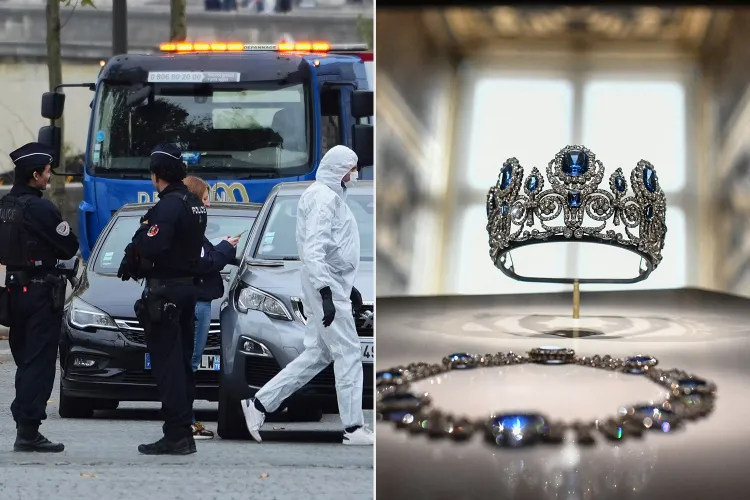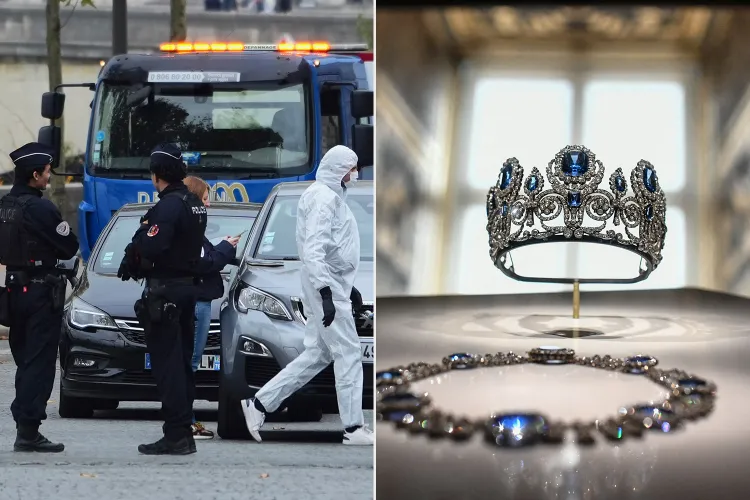What Jewelry Was Stolen from the Louvre in Paris? Police Confirm Emeralds, Tiaras, and Rare Historic Pieces Worth Millions Were Taken in Bold Morning Heist
Paris woke up to shocking news this week as one of the world’s most famous museums became the scene of a daring robbery. Thieves broke into the Louvre, stealing millions of dollars worth of jewelry from its historic Galerie d’Apollon — the very gallery where France’s crown jewels are displayed. The theft took place early Sunday morning, around 9:30 a.m. local time, and according to museum officials, the list of stolen items reads like something out of a film: emeralds, diamond-studded tiaras, brooches, and other priceless artifacts that once belonged to European royalty.

The Louvre confirmed in a statement that the robbers entered through a side window, gaining access to the gallery before staff could intervene. The break-in appeared to be carefully planned, with security footage showing at least three individuals wearing masks and gloves. They moved quickly, targeting specific display cases rather than smashing at random — a detail that authorities say points to professional thieves who knew exactly what they were looking for.

Among the missing items are an 18th-century diamond tiara adorned with sapphires and emeralds, a gold brooch set with a rare Colombian emerald, and several pieces from the royal collection of Empress Eugénie, wife of Napoleon III. Some of these pieces were centuries old, carrying not just monetary but immense historical value. Experts have already described the heist as one of the most significant museum thefts in recent European history.

Police sealed off the area around the museum within minutes of the alarm being triggered, with investigators from France’s elite anti-crime unit, BRB, arriving soon after. The Louvre was temporarily closed for part of the day as forensic teams combed through the scene, collecting fingerprints, DNA traces, and footage from surrounding surveillance cameras. Authorities believe the robbers may have had inside knowledge of the museum’s layout and security rotation. “This was not an impulsive act,” one investigator told local media. “They knew what they wanted, how to get in, and how to get out before anyone could stop them.”

The Louvre, home to masterpieces like the Mona Lisa and Venus de Milo, also houses the Galerie d’Apollon — a hall originally designed by Louis XIV as a showcase of France’s splendor. The stolen items were part of a collection known for its intricate craftsmanship and royal provenance. Many of the jewels had been lent to the museum by private collectors and institutions, meaning ownership disputes could arise if the pieces aren’t recovered soon.
Officials have yet to disclose the total estimated value of the stolen jewels, but early reports suggest it could exceed $10 million. Louvre representatives emphasized that while the financial loss is devastating, the cultural damage is even greater. “These items are part of France’s shared history,” the spokesperson said. “Their disappearance is a tragedy not just for the museum, but for everyone who cherishes art and heritage.”
Interpol has since been notified, and French police have issued alerts across Europe in case the jewels appear on the black market. Experts say it will be difficult for the thieves to sell such distinctive pieces without drawing attention, as many are well-documented and instantly recognizable to collectors and dealers. Still, art recovery specialists warn that the items could be dismantled or the gems reset to make them untraceable — a common fate for stolen jewelry.
As the investigation continues, the heist has reignited debate about museum security and the vulnerability of cultural treasures. The Louvre has promised to tighten its protocols while working closely with law enforcement to recover the missing items. For now, the empty glass cases in the Galerie d’Apollon stand as a haunting reminder of what was lost — and of how, even in one of the most guarded museums on earth, beauty can vanish in the blink of an eye.



